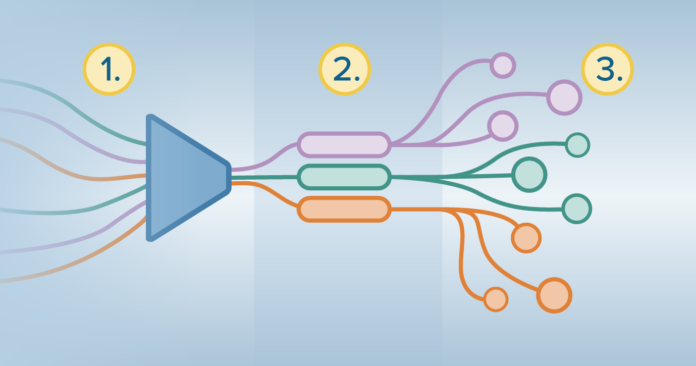If you’re looking to create more relevant, engaging content that meets subscribers where they’re at—look no further than dynamic email content. These highly tailored emails that target subscribers’ wants, likes, and needs are more likely to prompt engagement (and conversions) from subscribers—since you’re serving them something relevant to the interests they already have.
Sounds simple, right? Why aren’t we all using this powerhouse tool, like yesterday? 🤯
Well, it’s a little bit more complicated than it sounds, but we can explain. Read on to discover how you can harness the power of dynamic email content to create super-duper engaging and personalized emails.
Why use dynamic email content?
Dynamic email content gives you all the power of highly targeted and engaging content (like personalization!), while saving huge amounts of time in setup, maintenance, and management.
Dynamic email content lets you personalize email copy and images down to the individual recipient level by using simple content blocks that automatically update based on subscriber characteristics or behavior. For example, if someone has browsed a certain item in your online store, you can make the most of your shopper data by using dynamic content to display the item in an email. Simply, it’s an easy solution to create a truly personalized experience for your subscribers.
Customers are 80% are more likely to make a purchase from brands that provide personalized experiences.
Short answer: Dynamic email content improves email engagement rates. Mic drop!
So now that we know why we should be using dynamic content, let’s talk about how to implement it.
Improving email engagement rates with dynamic content
Here’s our three-step process for implementing dynamic content into your email workflow.
1. Collect your data
First up, you’ve got to collect the right data. You can have the best ideas for your email strategy, from personalization to product recommendations, but none of this matters without cold hard data. You need to ensure that you collect the right customer information like you’re mining for gold! And make sure to get creative with it, too. If you have a customer’s shoe size, or color preferences, for example, you’ll be able to serve better personalized content.
2. Segment your audience
Once you’ve got the right data, it’s time to segment it! There’s no use sending an email for smart men’s suits to a millennial looking for summer vacation looks. By segmenting your data, you can ensure that you’re always marketing the right product to the right person. There are many different ways to segment data—gender, age, location, and even how engaged they are with your emails.
3. Customize your messaging for each segment
Finally, ensuring your messaging will resonate with each segment is key. To not customize your messaging after you’ve collected all that data and segmented it is a total waste of time and resources. To effectively market to each segment, ensure the content is relevant, the copy is reflective of that segment’s interests, and most importantly, the emails contain products you can now nearly guarantee will be of interest to the recipient.
Types of dynamic email content
Next, let’s cover some types of dynamic email content you can utilize, depending on the data you have and the way you’ve segmented it.
Web-based product content
You can display live content based on “most viewed,” “most purchased,” or “most added to cart” based on live site activity. You can choose to display a stream of products from all categories, control the category manually, or even combine it with CRM data.
Product recommendation-based content
You can create product bundles that are based on site-wide data and product characteristics. Products are grouped together based on shoppers with similar behaviors who went on to view or purchase. This includes “frequently bought together” and “similar items.”
Individual product recommendations
You can send emails containing personalized recommendations for each known individual. Each email opener will see products tailored exactly to them, based on their specific site behavior and product data. For example, you can show “recently purchased,” “recently added to cart,” and “individual recommendations,” ensuring the email experience is as personalized as it can get.
Open-time content
Open-time content is a great way to show email recipients the most up-to-date information. You can include elements such as countdown timers, live weather reports, social signals to show likes, shares, and views on social media, and even timed deals that change and entice openers to come back to the same email time and time again.
Personalized content
Finally, what is arguably the most popular way to use dynamic email content to your advantage is with some simple personalization. Including a recipient’s name in an email subject line, or in the body of the email, is a great way to make a customer feel valued. Using a personalized image—including names, birthdays, star signs, and other information about the individual will add a level of personalization to emails that feel unique.
There are a wide range of personalization options:
Personalize images
Build some serious brand affinity by displaying personalized images in each email based on the customer’s information, preferences, location, and more. This example grabs the attention of the opener immediately by making their name part of the very first image introducing the sale!
Recommend items for an individual shopper
Use informed content automation guided by AI to serve hyper-personalized product recommendations crafted for each customer—including variations based on time zone, local weather, store location, and more. In this example, the local weather forecast formed the segment of subscribers who received this email about sun protective skincare products!
Highlight relevant products
Finally, we can also use personalization tools to simply display the right product at the right time—by showing products similar to others being viewed/searched or products new to the shelves. In this example, the latest NARS products are featured in this “new in” email at every open. When the products are updated on the NARS website, the emails update automatically too!
Pro tip: all these personalization options (and more) can be found in the AI Recommendations section of Litmus Personalize!
Bring value to the customer
Dynamic email content is about bringing value to the customer through personalization. Value to the customer is the first priority and should ideally be determined by the individual doing the browsing. The best examples of dynamic email content are those that eliminate as many obstacles as possible between the customer and what they need.
With this guidance in mind… Go forth and personalize!
This blog was originally published June 2022 by Martyn Lee. Updated August 2023 by Abigail Sims.







